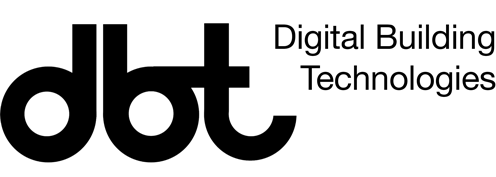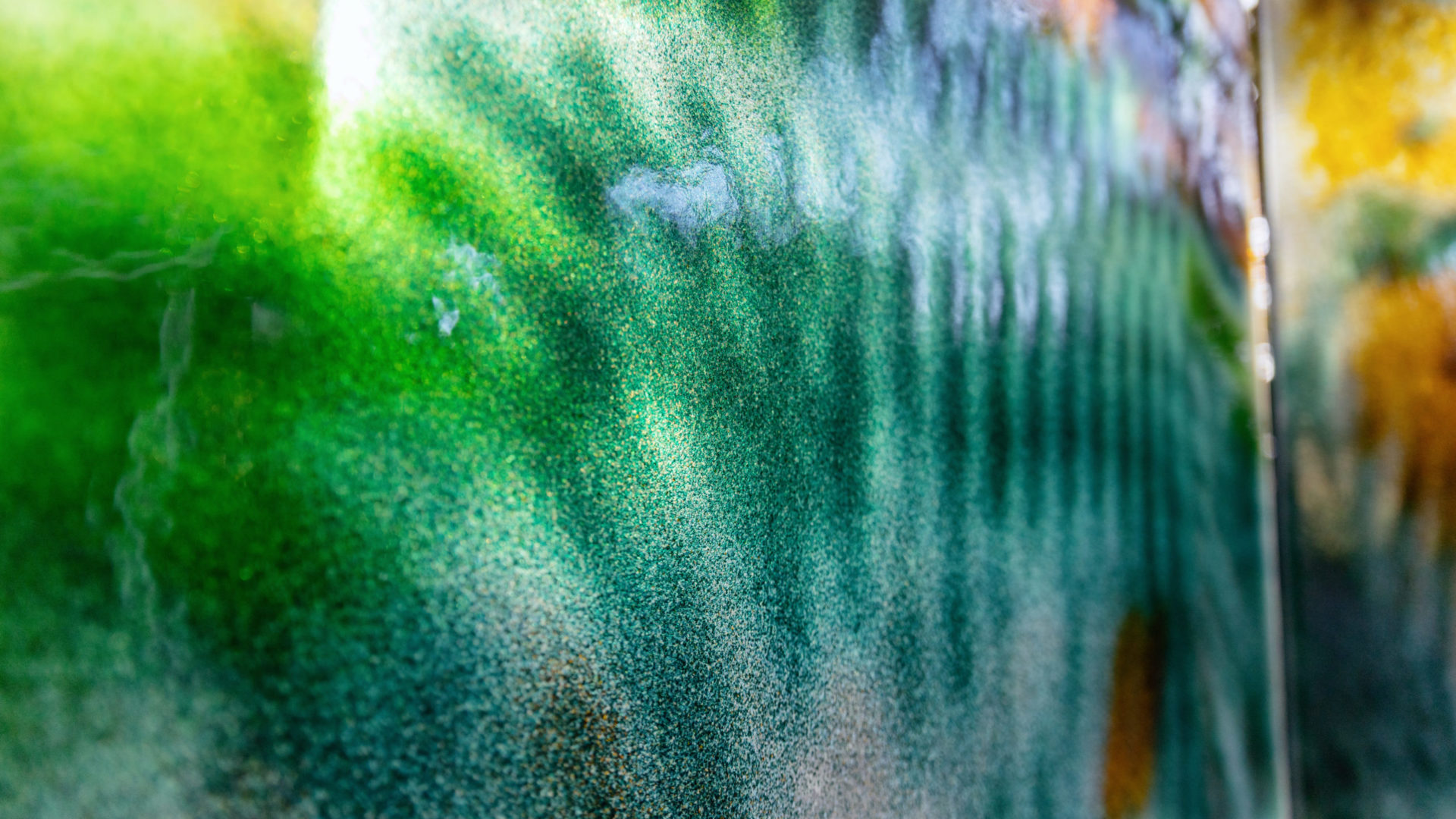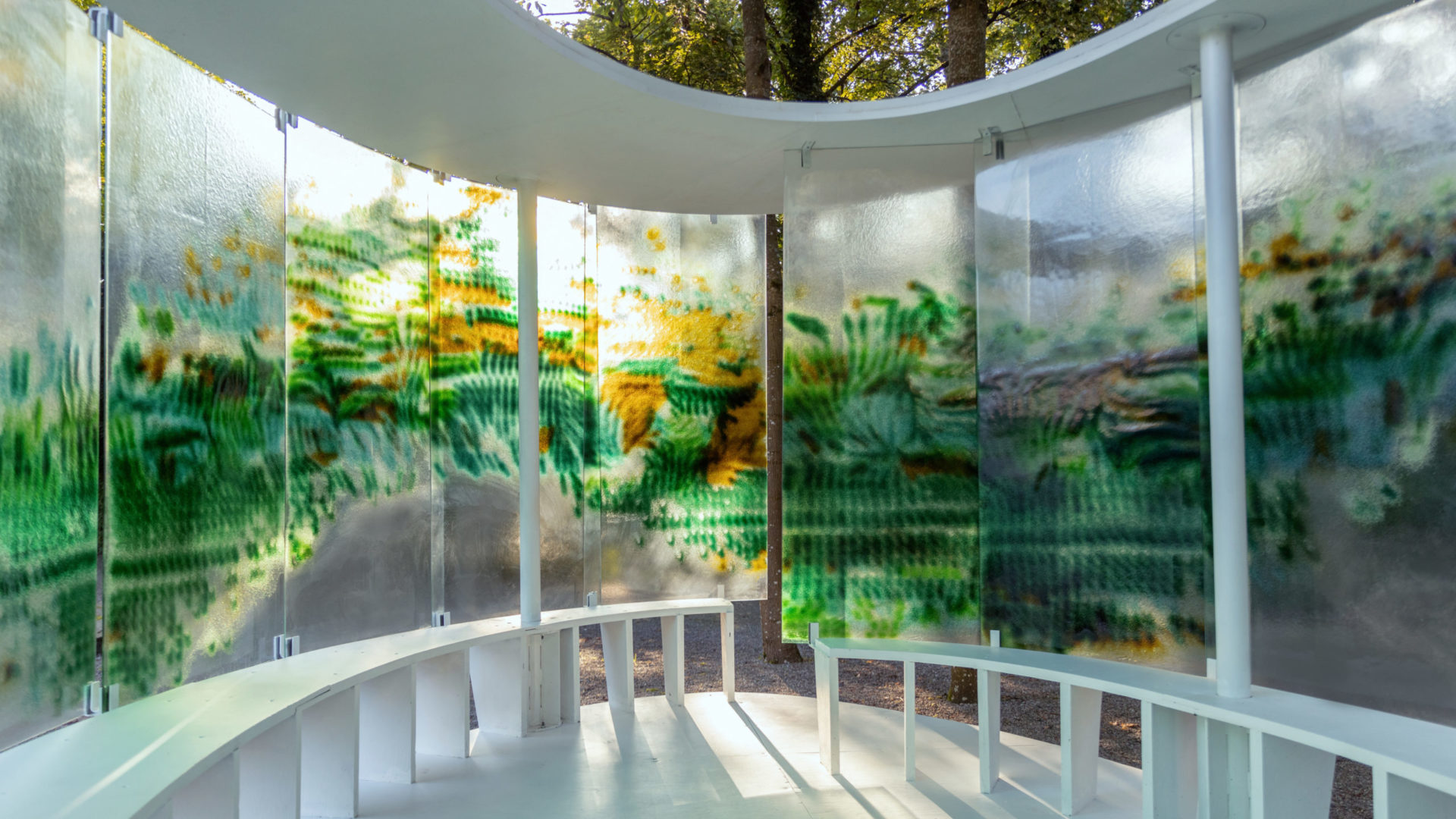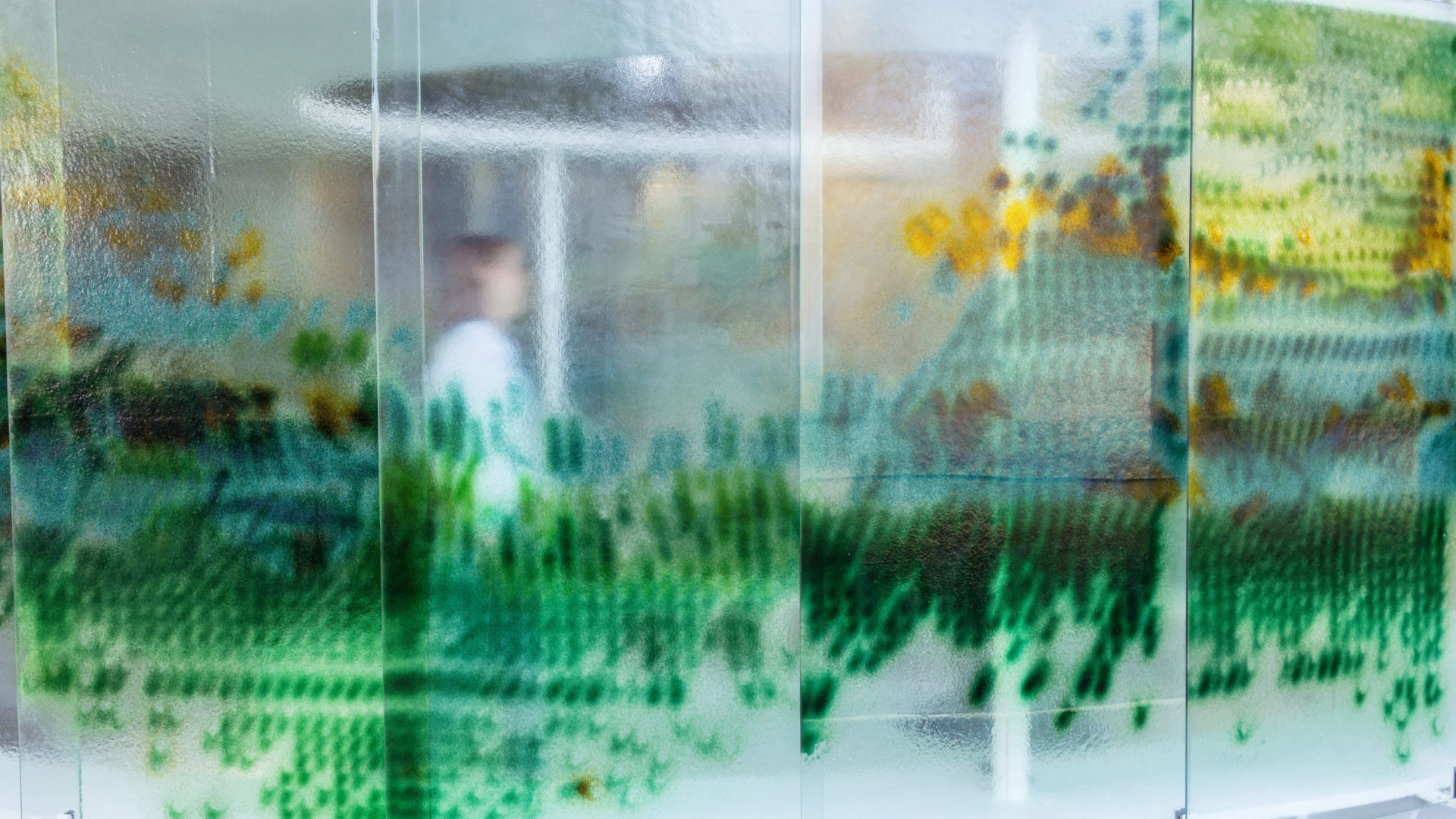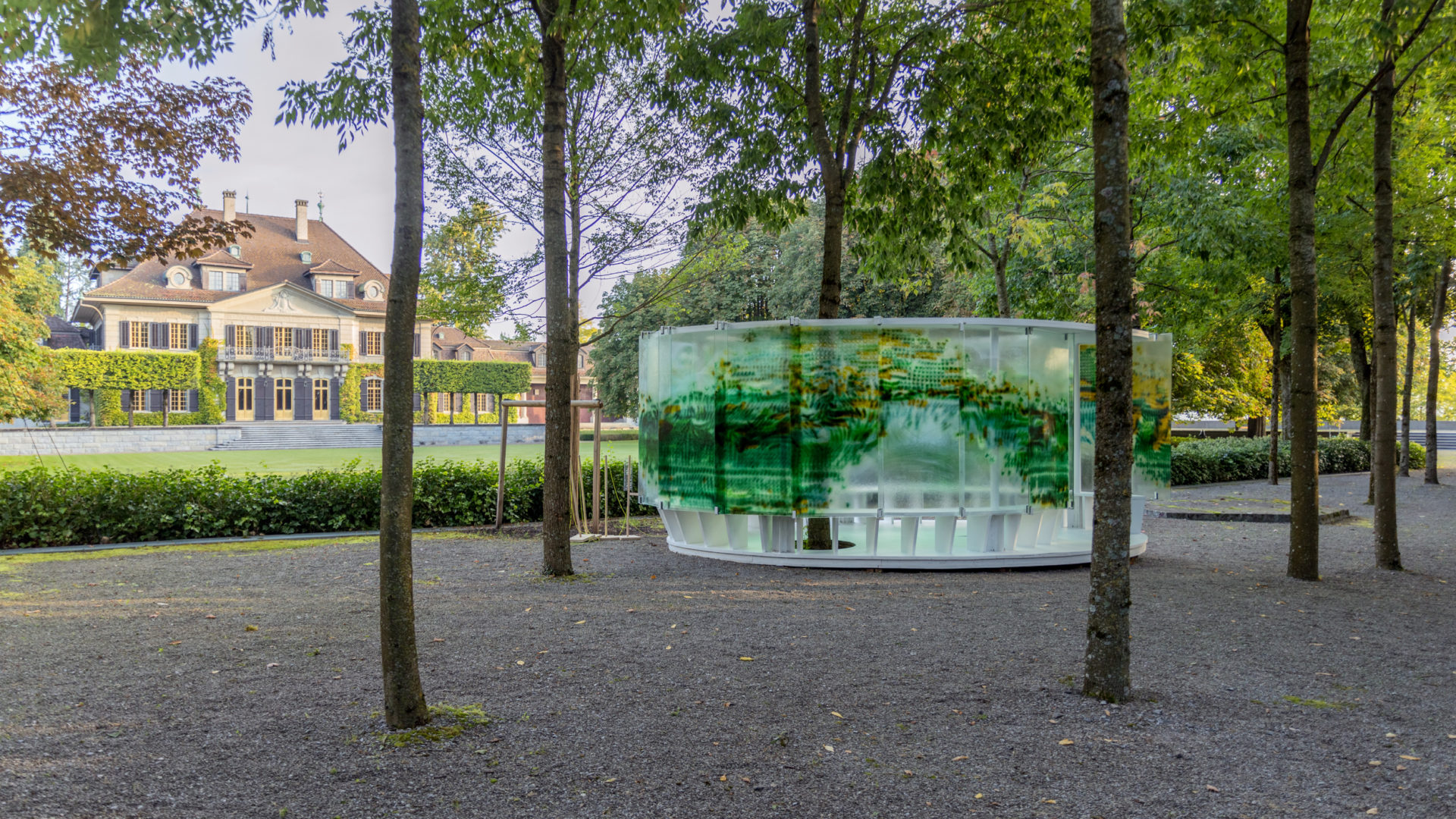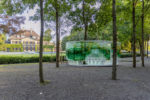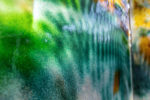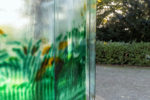Glass has played a key role in architecture not only bringing light into buildings and enabling views to the world around us. Throughout history, properties of color and form in glass, brought a transformative, sublime power to the material and to spaces. In the 20th century, the mass fabrication of glass enabled its use as a standardized, fully transparent material in architecture. Since then, architects and engineers have pushed the limits of size and transparency of glass.
How can robotic fabrication enable a novel customized materiality of glass and create new architectural experiences?
http://https://youtu.be/yapahLk1zDM
Robotic fabrication allows for the customization of float glass. The attached multi-channel tool contains granular glass of different colors and enables printing of polychromatic patterns. The granular glass surface is fused with the float glass at high temperatures in the kiln into one polychromatic glass element. Granular materiality is enhanced through a strategic play with robotic process parameters and robotic brush strokes.


Customized computational tools are developed to design patterns of color and material deposition. Strategies of computational design enable design from granular detail, to the overall pattern design. To design color and transparency properties of each panel, a point cloud model of the site is employed, to create the filtering effects in relation to site characteristics.


Designed specifically for the site of the Swiss Re Centre for Global Dialogue in Zurich, the forty square meter pavilion is an immersive, panoramic light color space assembled of eighteen individual panels along an oval floor plan. Each panel showcases how standardized architectural materials can be robotically enhanced with novel material properties of varying color, opacity and texture. The immersive installation demonstrates the potential of glass architecture beyond mere transparency and reinterprets its surrounding landscape.


The Beyond Transparency pavilion is designed by students of the Master of Advanced Studies in Architecture and Digital Fabrication 2020-2021 at the ETH Zurich and is based on previous research at the chair of Digital Building Technologies.

